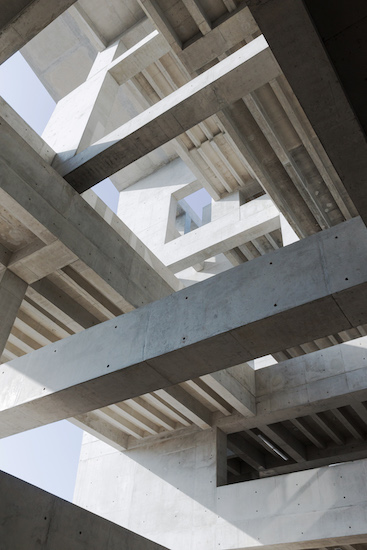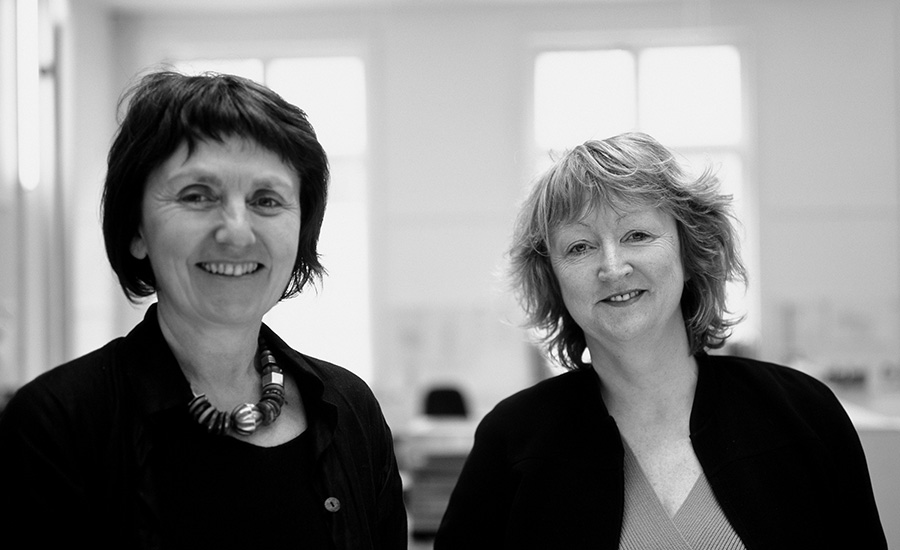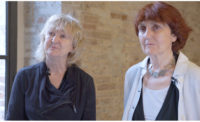Architect Yvonne Farrell was at home in her kitchen on the evening of January 19, 2020, when she received a phone call from Martha Thorne, the executive director of the Pritzker Architecture Prize. The call brought news that has just been announced today: Farrell and Shelley McNamara, cofounders of Grafton Architects, are the 47th and 48th laureates of the Pritzker Architecture Prize. “It came out of the blue,” Farrell told RECORD, speaking last week by phone from an “inner sanctum” of the firm’s office. (The announcement was still under embargo, even from their colleagues.) “It was an incredible surprise. We are still excited about this incredible award and recognition.”

Farrell and McNamara co-founded Grafton Architects along with three others (who have since left) in 1978, in a 650-square-foot space on the top floor of a building on Grafton Street in Dublin. The firm name reflects its setting rather than its founders’ egos—a value that permeates their significant body of work in Ireland and abroad. “We thought about the ethos of making a cooperative practice, one that wouldn’t be related just to the individuals,” said McNamara. And besides, Farrell added, “Saying five names takes too long for a telephone answering machine.”
The Pritzker jury citation commends the 2020 laureates for their “deep understanding of ‘spirit of place,’” noting their ability to create monumental institutional projects that are “zoned and detailed in such a way as to produce more intimate spaces that create community within.” The “vertical campus” of the Universidad de Ingeniería & Tecnologia (UTEC), completed in 2015 in Lima, Peru, demonstrates this, while also showcasing Farrell and McNamara’s skill at finding contextually sensitive solutions to challenging sites and programs. Bordered by a highway on one side and a residential neighborhood on the other, the stacked form of the 365,000-square-foot, 10-story concrete seismic structure echoes the city’s oceanfront cliffs, stepping down as it approaches the neighborhood in response to the changing scale of its surroundings. The architects achieved this effect by placing larger spaces, mainly laboratories, on the lower floors, with the smaller volumes of classrooms and professors’ offices on top.

The largely open-air structure, with abundant terraces and patios appropriate for Lima’s mild climate, also demonstrates Grafton’s ability to design complex sections that link inside spaces with the outdoors. The jury calls this “a constant in their approach,” noting how often “light streams from skylights or upper story windows throughout the interiors of their buildings, providing warmth and visual interest, helping the inhabitants easily orient themselves in the spaces, and providing the ever necessary connection to the exterior.”
Earlier projects set the trajectory for this preoccupation with thoughtful integration. Their North King Street Housing in Dublin (2000) defers to the warehouses around it with its restrained, unadorned exterior. For the Università Luigi Bocconi in Milan (2008), the architects created a ground-floor public space and lower level with views inside from the sidewalk. And in Toulouse, France, the Université Toulouse 1 Capitole, School of Economics (2019) reflects its context in both its materials—concrete and stone, sourced nearby—and design features—buttresses, ramps, and courtyards, recalling the bridges, walls, and towers of its medieval city.
The 2020 Pritzker Prize comes on the heels of several other prestigious awards. In the fall of last year, the Royal Institute of British Architects named Grafton winner of the 2020 Royal Gold Medal—the UK's top prize for architecture. The year before, the firm won the 2019 James Gandon Medal for Lifetime Achievement in Architecture from the Royal Institute of Architects of Ireland. In 2016, the UTEC building took the inaugural RIBA International Prize. And in 2012, Farrell and McNamara were honored with the Silver Lion Award at the Venice Architecture Biennale for the exhibition Architecture as New Geography. (This past fall, Farrell spoke at Record’s annual Innovation conference in New York.)
In 2018, the pair curated the 16th edition of the international architecture exhibition at the Venice Biennale around the theme Freespace. The experience gave Farrell and McNamara an opportunity to articulate their approach to design in a public forum. “In creating our manifesto for the Biennale, we wrote down a litany of our shared values,” Farrell told RECORD. “That came very easily, because architecture is not just ideas; it’s translating ideas into very physical realities.” Their Freespace manifesto highlights the generous, democratic quality of architecture to provide “spatial gifts for those who use it” and to leverage resources that they call “nature’s free gifts”—sunlight and moonlight, air, gravity, materials.

While their shared and deeply held values have cemented Farrell and McNamara’s lengthy creative partnership, they also credit their colleagues for shaping their journeys. “Because we’ve known each other so long, there’s a deep sense of basic trust in judgment, and integrity and support,” McNamara told RECORD, “but we’re not alone in a room all the time. We have a fantastic group of colleagues and we benefit from their skills, talent, and passion.”
“Shelley and I are, at a human level, extremely touched that our peers—people we don't know, and people we do know—have acknowledged the body of work that we and our team have been creating over the years,” Farrell told RECORD. “We are truly delighted and humbled to receive this global recognition for what we do every day. And that is what we do: we work every day.”
Farrell and McNamara are the first architects from Ireland to win the Pritzker, which is considered by many to be the profession’s highest honor. U.S. Supreme Court Justice Stephen Breyer serves as chair of the eight-member Pritzker Prize jury, which added to its ranks last year Columbia University professor Barry Bergdoll and New York–based architect Deborah Berke, replacing outgoing jurors Richard Rogers and Ratan N. Tata.
Details about the ceremony’s location and date will be released in the fall.








